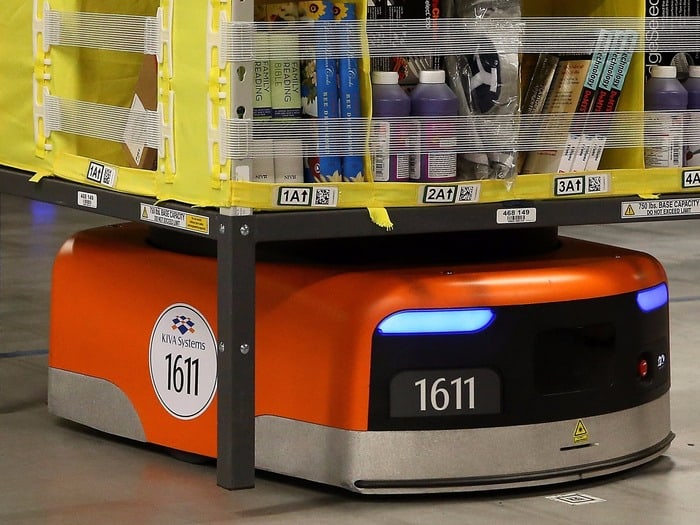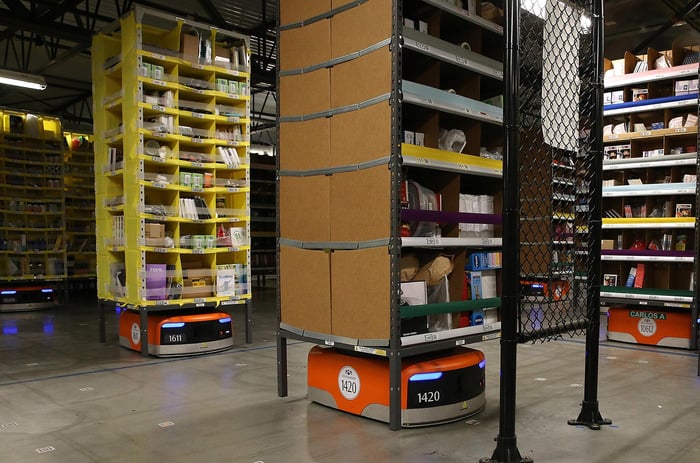Introduction
In the present-day rapidly-evolving marketplace, meeting customer demands while staying competitive is a challenging feat for businesses. Efficient warehouse management is essential to achieve these targets. Although automation has significantly revolutionized workspace operations in recent years, DeusRobotics Rack Moving Robots stand out among the different technologies.
Designed to streamline warehouse workflows, rack-moving robots make the process of managing and relocating racks considerably easier. In this article, let us discuss the first steps that need to be taken while implementing rack-moving robots in your warehouse management system and understand how they can simplify warehouse work significantly.
Understanding the Technology
Before you can introduce shelf-moving robots, you need to get a complete understanding of the technology. Rack moving robots are autonomous machines designed to move and position racks in a warehouse environment. They are equipped with advanced sensors, precise navigation systems, and robust mechanical capabilities to perform these tasks efficiently and effectively. Familiarizing yourself with the technology and its capabilities will lay the foundation for successful implementation.

Assessing Warehouse Layout and Racking Systems
The first step in using robots to move shelving is to assess the layout of your warehouse and shelving systems. Conduct a thorough assessment of the physical layout, including rack layout, aisle widths, and any potential obstacles. This assessment will help determine your warehouse’s compatibility with robots and identify any necessary changes or adjustments needed for seamless robot integration. Understanding existing racking systems and their configuration will help in programming robots to accurately navigate and interact with the racks.
Planning for Integration
Integration planning is a critical step in the successful implementation of shelving robots. Work with your robot manufacturer or supplier to develop an integration plan that meets the specific needs of your warehouse. This plan should include aspects such as the number of robots needed, their designated routes, charging stations, and communication protocols with other warehouse systems. Make sure that the integration plan provides minimal disruption to current operations and includes a clear timeline for implementation.
Staff Training and Safety
Proper training is vital to ensure the safe and efficient operation of rack-moving robots. Train your warehouse staff on how to interact and collaborate with the robots effectively. This includes understanding their capabilities, programming them for specific tasks, and addressing any safety concerns. Emphasize the importance of adhering to safety protocols, such as maintaining clear paths for the robots, understanding emergency stop procedures, and proper handling of racks during robot-assisted movements. By investing in comprehensive staff training, you can create a safe and productive working environment.
Implementing Trial Runs and Optimization
After integrating the rack-moving robots in your warehouse, initiate trial runs to validate their functional performance and fine-tune them where required. Evaluate the navigation system of these robots along with analyzing how well they handle different types of racks and coordinate with other warehouse systems to ensure an efficient workflow. It is essential for the robotics’ ability to adapt to various rack configurations accurately.
The key parameter that needs monitoring includes performance efficiency, accuracy level, flexibility towards changes in the workflow along staff feedback. Based on suggestions from employees working at your warehouse optimize robot performance accordingly.
To obtain maximum benefits from this implementation process, regular monitoring and refining are necessary practices over time.

Conclusion
If you’re looking to modernize your warehouse operations and increase efficiency, rack-moving robots are definitely worth considering. These machines can help simplify the process of organizing and transferring racks, streamlining otherwise labor-intensive work. To successfully implement these technologies in your warehouse there are a few key steps you’ll want to take.
First, ensure that both yourself and the staff have thorough product knowledge so they may properly understand how the technology works. Once trained on this technology, assess your warehouse layout to decide how best robots can be integrated without overwhelming human resources.
Given the complexity of this machinery, planning is crucial at every stage (from design layout to post-installation operation). Providing focused staff training sessions will also give workers a boost of confidence in their ability with the equipment.
Before throwing these systems into full use within your facility – conducting trial runs for each step is encouraged; it’s an excellent way to identify areas needing fine-tuning before making things official.
Incorporating automated procedures will not only optimize productivity but provide stronger safety measures and create the effortless workflow needed for long-term success – Opting for rack-moving robots will provide all those benefits while transforming rote processes from high-stress drudgery into futuristic tranquility efficient activities.